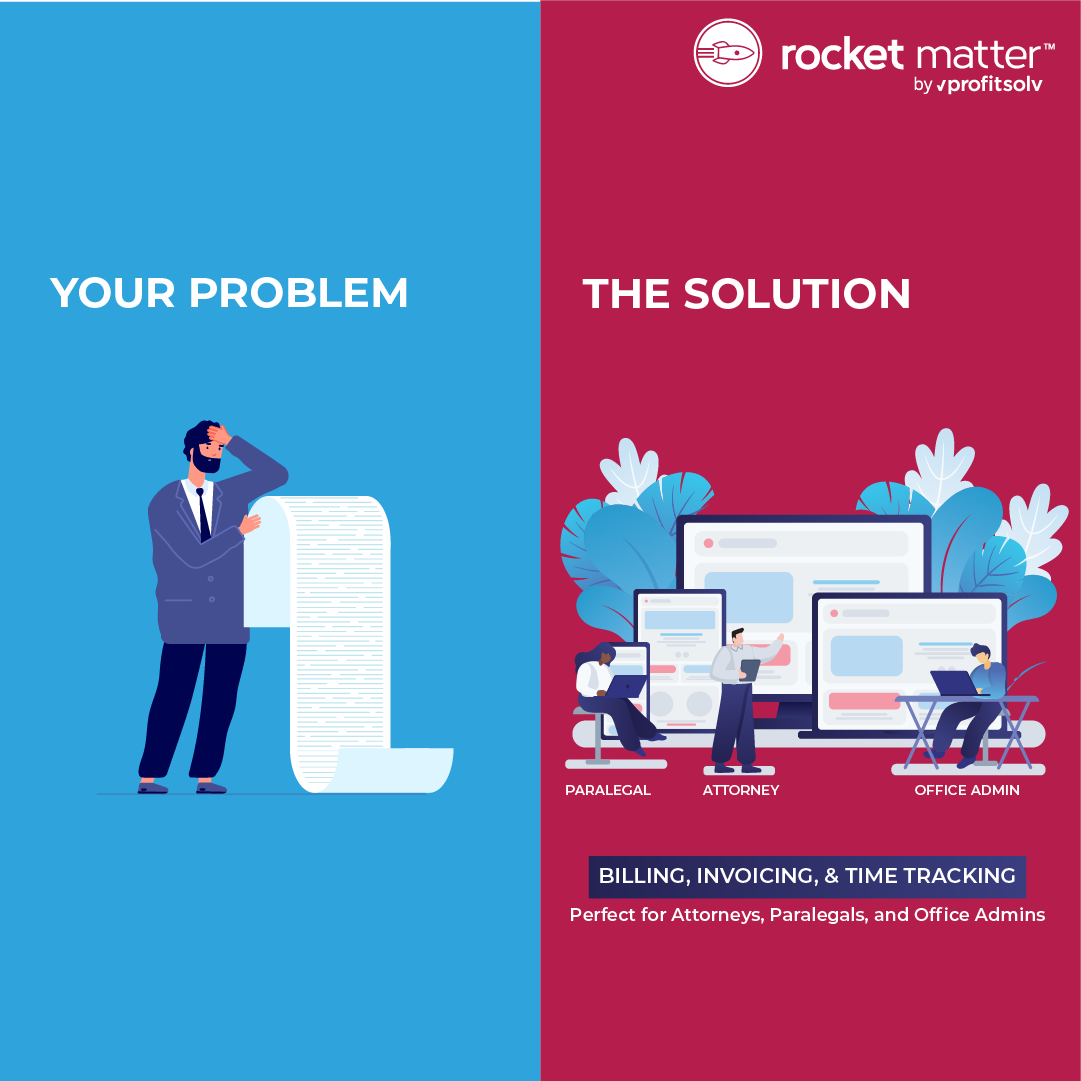Demystifying Legal Practice Automation

We’ll admit it: the idea of automation can get a little too buzzwordy. You may hear that it’s a “low-hanging fruit” to “increase bandwidth” and “break down silos” for “improved synergy.”
Which means…something. Probably. But even if you kind of know what that means, do you actually understand what automation does? Probably not.
Marketing buzzwords aside, automation is incredibly valuable for law firms when it’s used the right way.
So let’s jettison the overused jargon and talk about the real, tangible ways that automation can benefit law firms. No buzzwords allowed.
Here’s your straightforward introduction to legal practice automation—what it is, why it matters, and exactly how it can help save time and increase profits for your law firm.
What is legal practice automation?
At its core, automation is the creation of a process or system that replaces manual work.
In computer systems, automation is created using “if/then” instructions such as:
- If you spell something wrong in a text, then your phone will autocorrect that word
- If you use the word “attached” in an email, then your email will ask if you meant to attach a document
- If you create an email group for a weekly report, then your reports will go to all users in that email group
While these are all things you could do manually, they would take unnecessary time and effort. With automation, your software completes these tasks for you (without pulling you away from any of your high-value work).
Legal practice automation, specifically, is part of legal practice management software, which helps law firms operate their business more efficiently. It works by decreasing the amount of effort that legal teams must put into the hundreds of small, repetitive tasks required to run a firm.
In short: automation saves you time by completing repetitive tasks for you, so you can get back to higher-value, billable tasks.
Legal automation misconceptions
Because automation is a developing technology, there are a lot of misconceptions about its potential applications. Legal automation tools are not designed to replace staff, and they can’t cross off your entire to-do list. Instead, automation lets staff members move from redundant, manual work to high-level, high-value tasks.
Yes, you can create and automate email drip campaigns designed to attract new leads. But your automated campaign can’t analyze its own metrics and adjust strategies based on what ideas work best.
And yes, you can automate monthly accounting reports. But your report can’t review itself, or examine how the results reflect on ongoing projects compared to last quarter’s KPIs.
Automation is a fantastic tool, but it won’t magically fix all your problems. When implemented correctly, though, it can make your life significantly easier.
Because let’s be real here: legal staff rarely have enough time in the day for their billable work, let alone all of the administrative duties, clerical tasks, and marketing efforts involved in operating a successful business.
Free Guide
The Paperless Law Office: A 12-Month Plan
for Going Paperless
This free guide will provide you with an actionable plan for going paperless, with monthly tasks that include:
1. Determining your paperless processes
2. Establishing naming and filing conventions
3. Choosing an online storage provider
4. Embracing mobile paperless tools
5. And more important resources!
Five ways automation can benefit your law firm
Now that you know what automation can’t do, let’s get into five ways that automation can add value to your law firm.
1. Document automation
Stop spending time on copy-and-paste document assembly (which takes too much time and causes too many errors), and look for a legal practice management tool that offers document automation. With document automation, teams can build customizable templates, such as invoice templates or service agreements, that automatically populate fields using client information already stored within the system.
As a result, team members can quickly create new documents without worrying about the likelihood of manual data entry errors.
2. Time tracking
Tracking time is a key administrative task in any legal practice. But manual tracking creates more work when it’s time to draft invoices and review each client’s billable hours.
On the other hand, automated time trackers can help you log your time as you work, switch between clients, pause for breaks, and automatically add billable hours to client invoices.
In practice, this means that instead of trying to account for your time every week after the fact (and potentially misrepresenting your billable hours), you can instantly populate invoices with automatically tracked time. All you’ll need to do is conduct a final review of your invoices to ensure accuracy.
3. Online payments and invoicing
The easier it is to pay a bill, the more likely your client is to pay on time (without the awkward collection call from your office).
Email invoices and online payments are a great way to increase on-time payments and provide a better client experience at the same time. Clients can conveniently pay invoices from their phone or computer—and you’ll receive funds faster, too.
This, in turn, lets you focus on your clients’ needs, rather than your firm’s outstanding invoices.
4. Recurring billing for appropriate clients
Use automated workflows to set up recurring automatic payments for clients on retainers. For clients who get behind in their payments, automatic payments allow them to gradually pay off their balance over time.
Batch billing is another automation tool that can save teams significant time for clients with similar fee structures. Firms can generate multiple invoices at once and send those bills to each client with customized emails, which crosses one more thing off your to-do list.
5. Email drip campaigns
Legal client relationship management (CRM) software is an automation tool that often comes packaged with practice management software. CRM systems allow users to build email drip campaigns, which can create more client touchpoints to build trust and engage with potential or current clients or even leads that have gone cold.
For example, email drip campaigns can:
- Follow up with leads immediately after they fill out an online intake form
- Educate clients about different service offerings
- Request referrals from satisfied clients
And just because email campaigns are automatic, that doesn’t mean they’re robotic—law firms can personalize email campaigns and use their brand voice to create unique and effective campaigns that will be useful for years to come.
See the very real benefits of automation with Rocket Matter
Rocket Matter’s automation features help your law firm minimize headaches and maximize efficiency—it’s as simple as that.
Schedule a demo or sign up for a free trial today.
Free Guide
The Paperless Law Office: A 12-Month Plan
for Going Paperless
This free guide will provide you with an actionable plan for going paperless, with monthly tasks that include:
1. Determining your paperless processes
2. Establishing naming and filing conventions
3. Choosing an online storage provider
4. Embracing mobile paperless tools
5. And more important resources!
Related Resources

How to Increase Your Profits with Rocket Matter
Lawyers in firms of all sizes struggle to finish the work for the day in a reasonable amount of time. With document creation, non-billable tasks, and time spent following up with current and potential clients, the workday quickly turns from a planned eight-hour day into a twelve-hour one.

How to Master Your Law Firm’s Time and Billing
Lawyers have a heavy workload. With so many clients and their various needs, it’s easy to put tedious administrative tasks like time tracking and billing on the back burner.

6 Billing Strategies to Grow Your Law Firm
Scaling your law firm doesn’t just mean adding more lawyers or increasing your number of clients. The best way to boost your law firm’s finances is to minimize your non-billable hours and make sure that every hour of your day is accounted for.
Share post:








